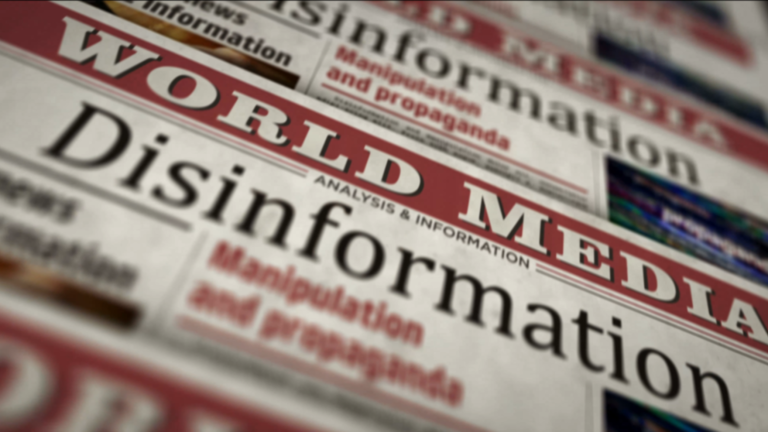Russia’s Disinformation Ecosystem: A Multi-Faceted Assault on Truth and Trust
Russia’s disinformation infrastructure is a sprawling network designed to manipulate public opinion and sow discord on a global scale. This sophisticated apparatus extends far beyond official government channels and state-sponsored media outlets like RT. Leveraging a complex web of actors, including intelligence services, the Russian Orthodox Church, Kremlin-linked oligarchs, and affiliated outlets in various countries, Moscow orchestrates a symphony of disinformation across multiple languages and platforms. The strategy involves tailoring content to specific audiences, exemplified by RT America targeting the U.S. right wing and "Watching the Hawks" geared towards the U.S. left. By obscuring the origin of their narratives through a complex web of seemingly independent sources, Russia aims to amplify its messages and create an illusion of organic support.
A key tactic employed by Russia is the creation of an echo chamber effect. Social media platforms are flooded with rumors and fabricated stories, which are then picked up and amplified by "official" news outlets. This orchestrated feedback loop lends an air of legitimacy to the disinformation narratives and allows social media campaigns to link back to seemingly credible sources. This strategy is bolstered by the engagement of conservative influencers in various countries, who often unknowingly disseminate Russian propaganda lines. Russia’s approach, often described as a "firehose of falsehood," involves inundating the information space with a barrage of false and exaggerated narratives, then strategically amplifying those that gain traction.
Moscow’s primary motivation is to undermine trust in Western governments, particularly the United States. This objective is pursued through various means, including interference in elections and the targeting of prominent U.S. companies. By attacking these corporations, Russia aims to erode public trust and create a climate of suspicion. A prime example is the 2023 conference held in Africa, where Russia accused U.S. pharmaceutical companies of conducting unethical biological testing under the guise of vaccine distribution. Such tactics leverage pre-existing anxieties and exploit vulnerabilities in the information landscape to damage the reputation of the United States and its allies.
Since the invasion of Ukraine in 2022, Russia’s disinformation efforts have intensified, focusing on discrediting opponents of the war and entities supporting Ukraine. The attempted assassination of Rheinmetall’s CEO and various acts of sabotage in Europe underscore Moscow’s willingness to target companies contributing to Ukraine’s military capabilities. This demonstrates a shift in tactics, moving beyond information warfare to potentially include physical threats and actions. This escalation signifies a dangerous trend where disinformation campaigns serve as a precursor or justification for more direct forms of aggression.
China’s Disinformation Strategy: A More Calculated and Commercially Driven Approach
China’s disinformation strategy differs markedly from Russia’s, driven primarily by commercial interests rather than a desire for global disruption. While the line between public and private sectors remains blurred in China, with companies expected to toe the government line, Beijing leverages disinformation to promote its economic interests on the global stage. As a major player in the global marketplace, China utilizes disinformation to enhance the competitiveness of its companies and gain a strategic advantage.
China’s approach often involves casting doubt on the trustworthiness of U.S. companies, particularly in sectors where Chinese companies have a significant presence. During the COVID-19 pandemic, China, along with Russia, spread disinformation about mRNA vaccines, likely aiming to boost demand for its own Sinovac vaccine. This tactic demonstrates how disinformation can be weaponized for commercial gain, undermining competitors while simultaneously promoting national interests. This type of disinformation campaign can have severe real-world consequences, impacting public health and eroding trust in scientific advancements.
Beyond commercial interests, China also utilizes disinformation to counter criticism of its human rights record, labor practices, and political actions. The coordinated campaign against H&M, following the retailer’s concerns about labor abuses in Xinjiang, exemplifies China’s willingness to use disinformation to silence critics and protect its image. This incident highlights the potential for economic coercion and information manipulation to be used in tandem to suppress dissent and control narratives. As tensions rise over Taiwan, experts predict a potential shift in China’s disinformation strategy, with a greater focus on strategic objectives and potentially adopting more aggressive tactics similar to Russia’s. This evolving landscape underscores the need for continued vigilance and robust countermeasures to combat disinformation and protect the integrity of information ecosystems.


